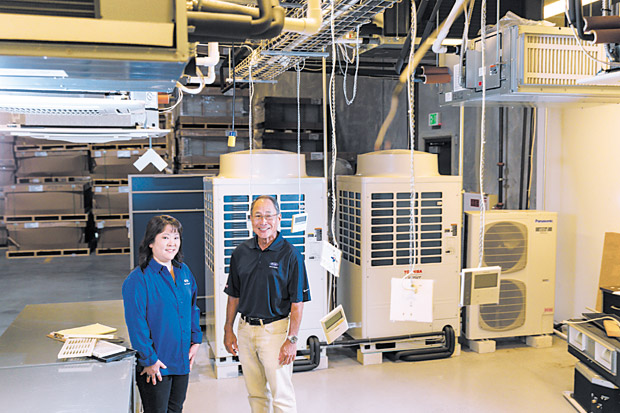The best way to cool off
When looking for air conditioning, don’t be confused by terms like energy efficiency, payback, life-cycle cost, R-value and more. Here’s how to go about getting a good A/C system without an engineer.
You have time before the next heat wave, so first consider measures to reduce the size of the system you need. Solar reflective roofing, insulated ceiling, ceiling fans, and if permissible, insulated walls, double-pane windows and light-colored exterior paint all help.

Energy efficiency is the amount of cooling capacity compared to electricity consumed for a given size system. Ideally, it would be equal, but in the real world it’s not possible. For residential systems, Seasonal Energy Efficiency Ratio (SEER), is used. This is energy output in British Thermal Units per Hour (BTUH) divided by energy input in watts. BTUH measures cooling capacity. An efficient unit will have a high SEER, more cooling capacity for a unit of electricity. Today, SEER minimum is 14.0, 16.0 to 20.0 mid-range, and 21 to 30.5 high efficiency.
Payback and life cycle cost are similar. Life cycle cost computes the total cost of installing, operating and maintaining the air conditioning system over the full useful life, usually 10 years. The operation and maintenance of reputable brands are similar. So the difference is in the payback period, or the time it takes to recover initial cost difference of the more efficient unit over the less efficient. This is the savings in your electrical bill. For example, if the more efficient unit costs $1,600 more but saves $200 a month in your electrical bill over the less efficient model, the payback is $1,600 divided by $200 a month, which is eight months. After that, it’s pure operational savings.
Headquar tered in Kapolei, Carrier Hawaii is Hawaii’s largest air conditioning distributor. For more information, call (808) 677-6339 or visit CarrierHawaii. com.
CARRIER HAWAII
contact // 677-6339
web // carrierhawaii.com